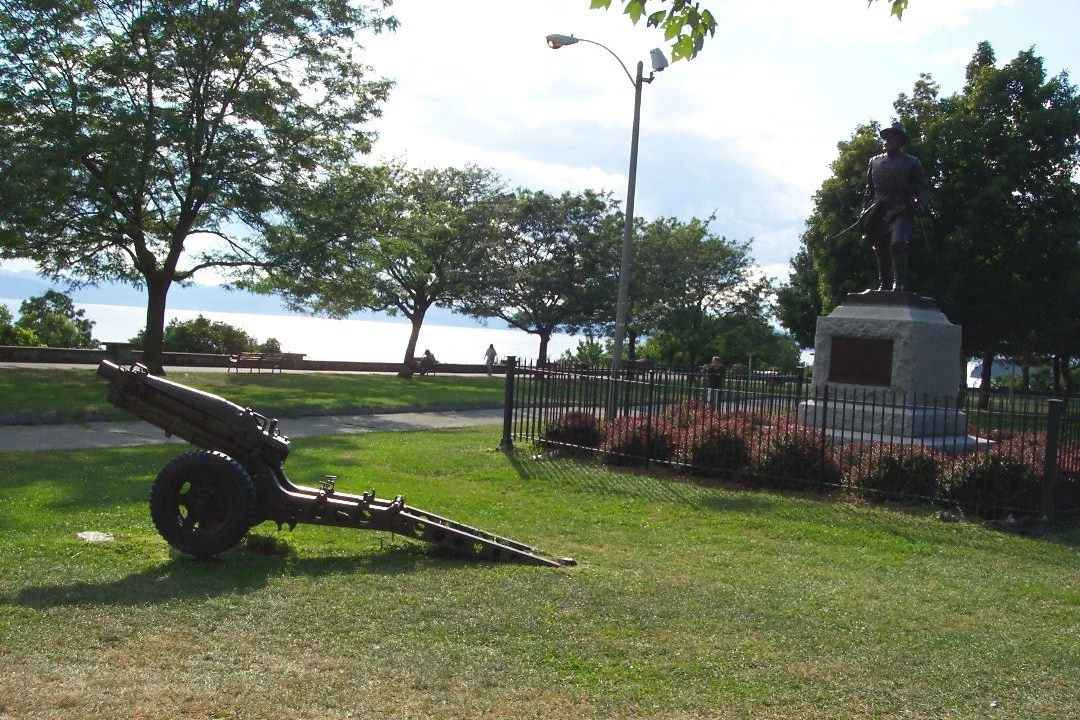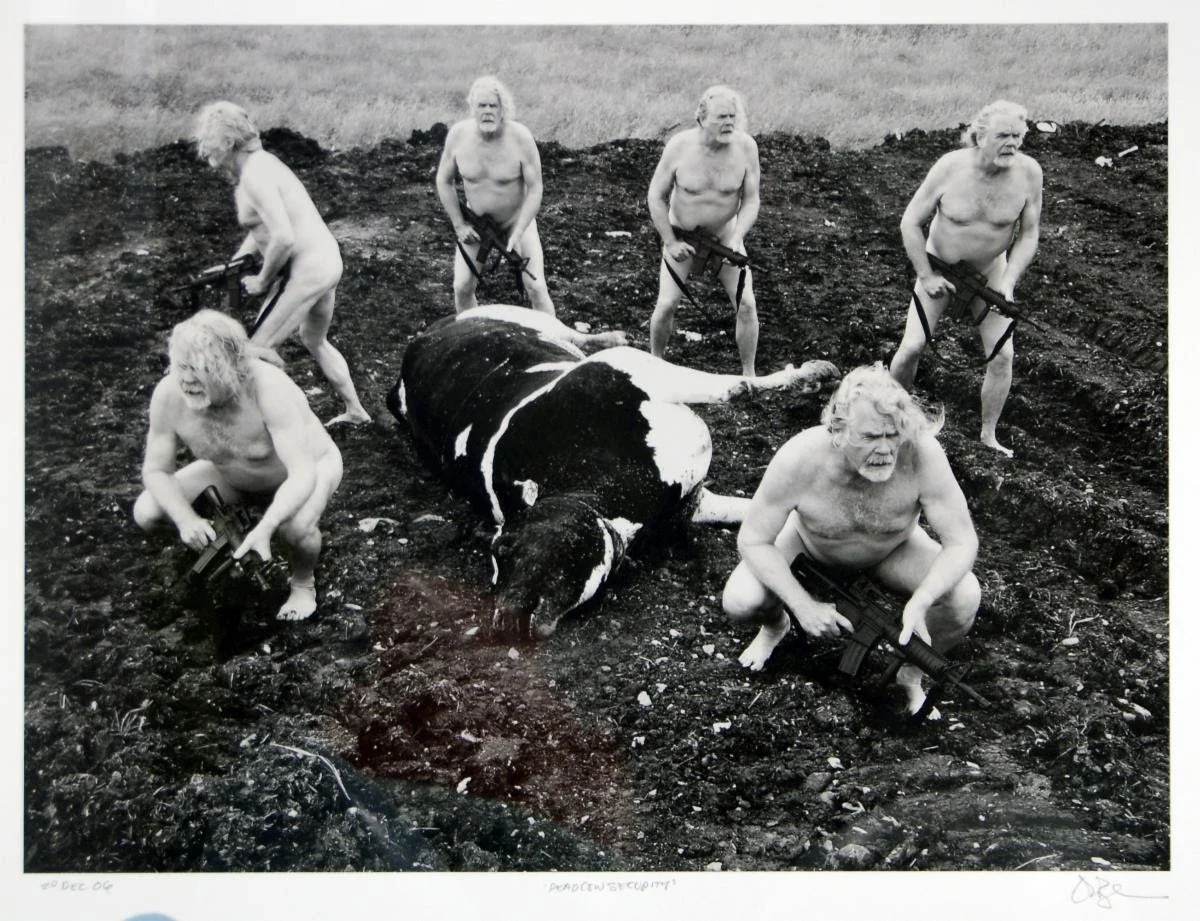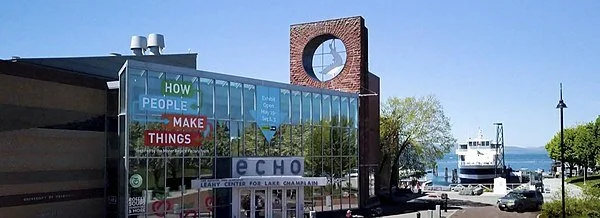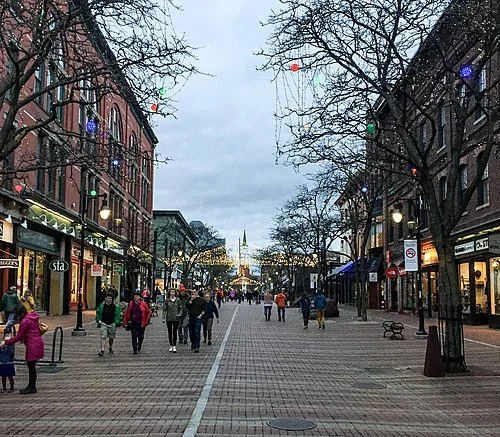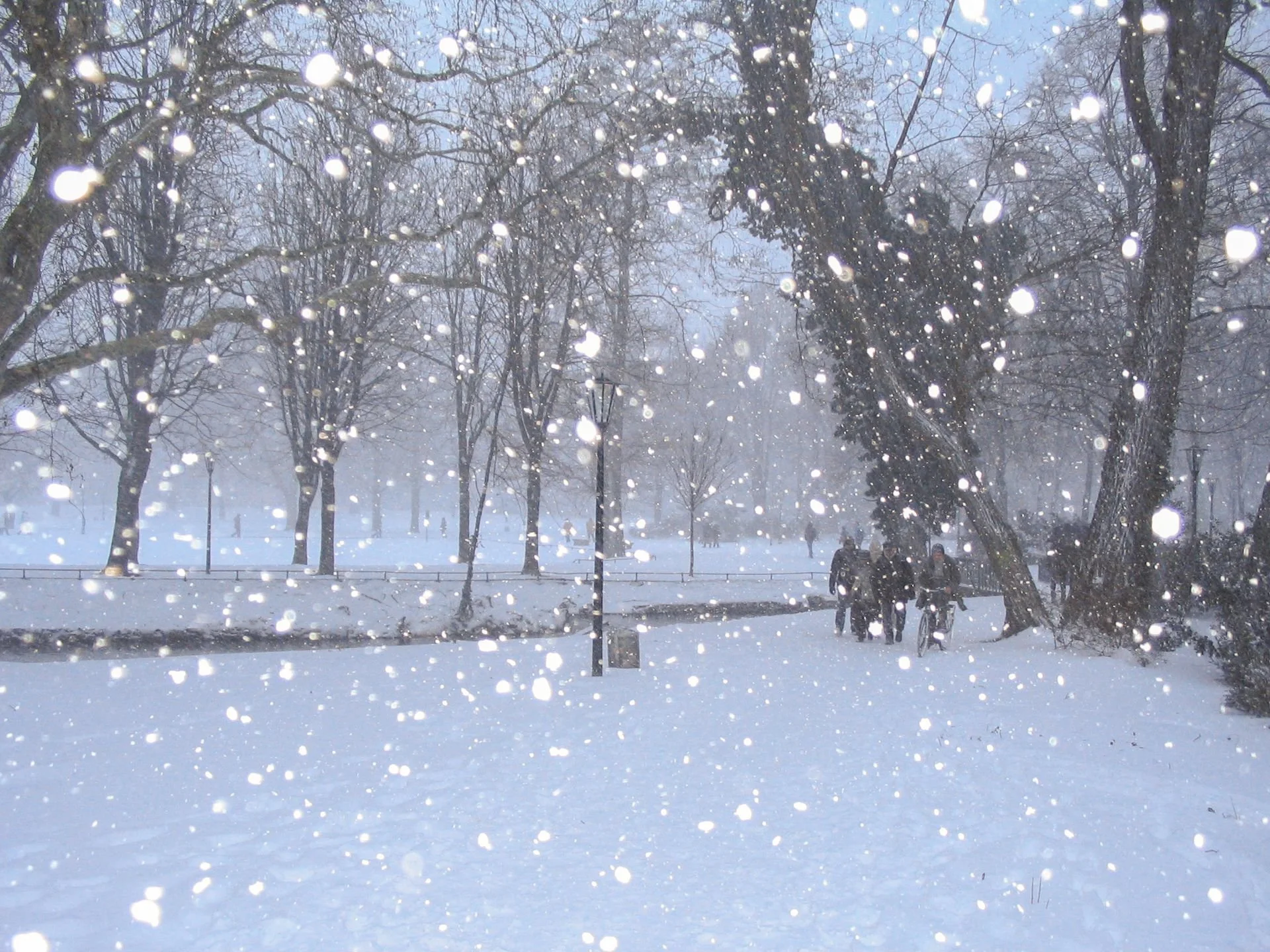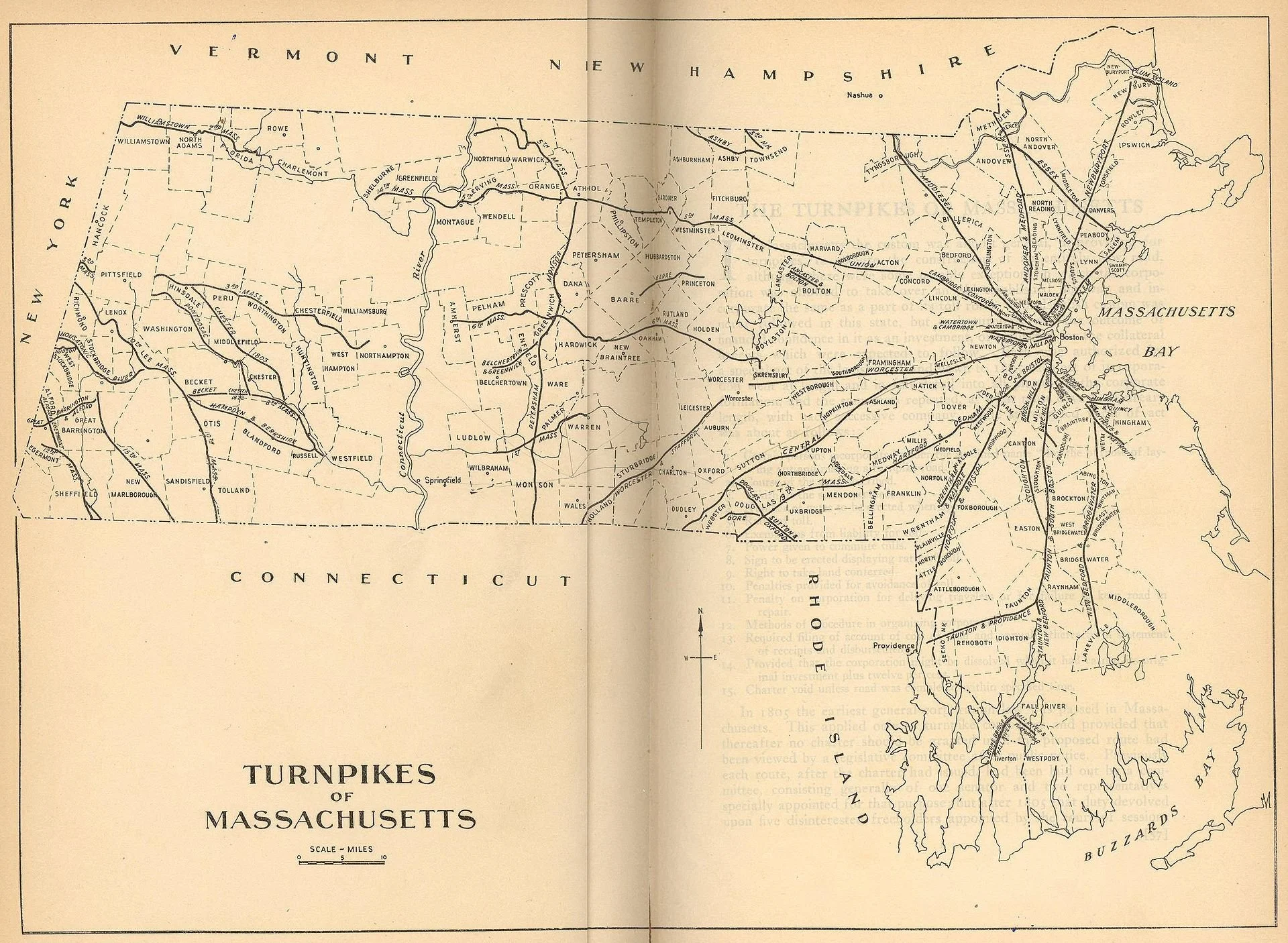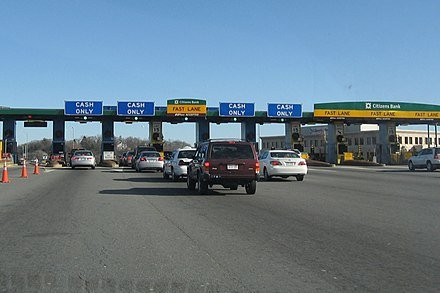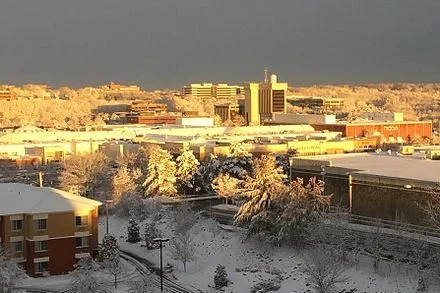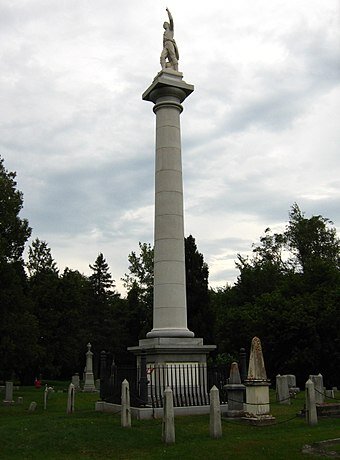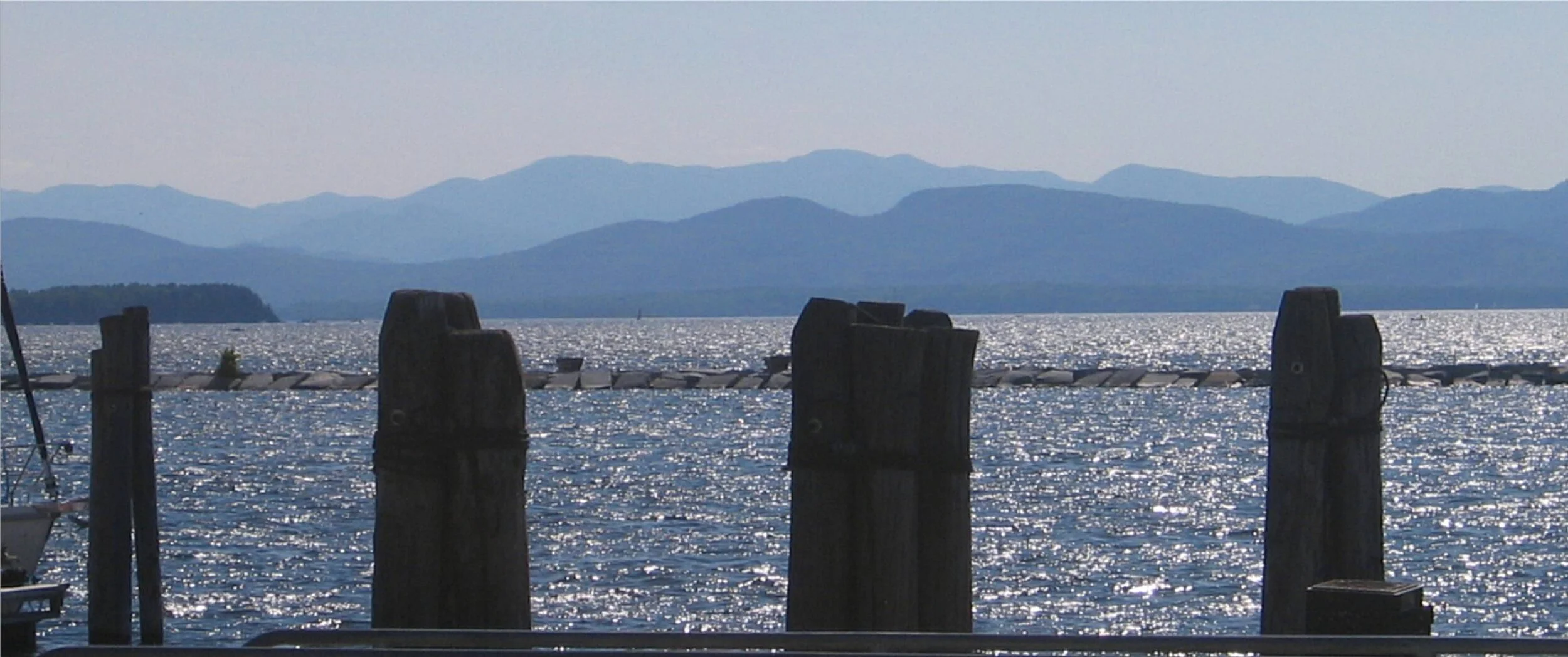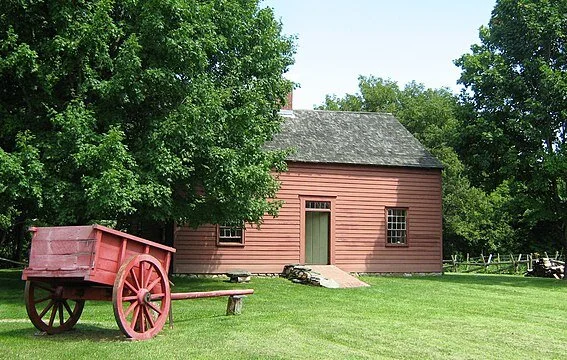
On an inland coast
The 1872 U.S. Coast Survey nautical chart/map of Burlington, Vt. It covers the urban center of Burlington as well as the surrounding areas as far south as Shelburn Point and as far north as as Rock Point. Offers exceptional detail, with important building, streets and property lines shown. In Lake Champlain there are countless depth soundings as well as notes on reefs and shoals.
Small, precious and laconic
Main Street in Danby, Vt.
— Photo by Redjar
Battery Park, overlooking the Burlington Waterfront and Lake Champlain
— Photo by Tania Dey
“All in all, Vermont is a jewel state, small but precious.”
— Pearl S. Buck (1892-1973), Nobel Prize-winning novelist. She lived in Danby, Vt.
xxx
“I don’t have a PR rep. I live in Vermont.”
Colin Trevorrow (born 1976), film director who has lived in Burlington. Vt.
Protecting the pasture
“Cow Security: Homeland Security Series’’ (digital photographic composite), by John Douglas, in the show “John Douglas: A Life Well Lived,’’ at the Gallery@The Karma Bird House, connected with the Northern New England Museum of Art, Burlington, Vt., through Aug 22. (Photo courtesy of Eleanor “Bobbie” Lanahan).
The museum says:
“John Douglas’s memorial retrospective documents his long, productive, and substantive body of work. Douglas called himself a ‘truth activist.’ His irreverent, activist beliefs, and Zen-like appreciation of the world fueled his decades of creative output. Douglas unceasingly addressed injustice, hypocrisy, unjust wars, and climate change. In ‘Homeland Security' he leverages American symbols and uses himself as a central actor with near complete humility to create a forceful critique of our cultural priorities.’’
ECHO, Leahy Center for Lake Champlain, formerly the Lake Champlain Basin Science Center, is an science and nature museum on the Burlington waterfront of Lake Champlain. It hosts more than 70 species of fish, amphibians, reptiles and invertebrates, major traveling exhibitions and the Northfield Savings Bank 3D Theater. It’s named for U.S. Sen. Patrick Leahy, of Vermont, who has long promoted the protection of the Lake Champlain Basin.
From Marxism to the Burlington marketplace
Church Street Marketplace in Burlington
“‘People’s Republic
of Burlington,’ old Marxist
stronghold, now just a stage
on its way to high
capitalism. Church
Street commodified.
Out on the loop roads
of Montpelier, what does ‘strip
development’ strip? Grass
from pastures….”
— From “Hayden’s Shack I Can See to the End of Vermont,’’ by Neil Shepard (born 1951), a Johnson, Vt.-based poet
'A blue-gray glow'
“Underneath,
mice and shrews are moving,
the dog can hear them down there,
out of sight and reach….’’
“a whole landscape laid out
in a blue-gray glow….’’
— From “Listening Through Snow,’’ by Burlington, Vt.-based poet and teacher Nora Mitchell
Reveling in the noise
Pre-Mass Pike map of the turnpikes of eastern Massachusetts, with the Worcester Turnpike following the roughly same path as the modern Route 9. Frank Kline would have used this map.
On the Massachusetts Turnpike
"Half the world wants to be like Thoreau worrying about the noise of traffic on the way up to Boston; the other half use up their lives being part of that noise. I like the second half."
-- Franz Kline (1910-1962), American painter who attended Boston University and summered and painted in Provincetown
xxx
"All of my lower-middle-class Boston issues rose to the surface. I don’t like it when bratty, privileged old white guys speak to me like I am their mouthy niece."
— Amy Poehler (born 1971), a native of the Boston suburb of Newton who grew up in the middle-class suburb of Burlington and who’s a TV actress, writer and producer
Burlington’s business district. The large town hosts many high-tech companies.
A waffle or the Texas electrical grid?
”Slanting Grid” (acrylic and beeswax on muslin with canvas, polyester fiber and thread), by Meg Lipke, in her show “In the Making,’’ at Burlington City Arts, Burlington, Vt,. through May 15.
The gallery says that Ms. Lipke seeks to challenge conventional notions of painting by drawing on “20th Century modernism, past craft traditions and memories of her mother and grandmother's creative practices to create soft paintings and totemic sculptures of canvas and cloth. She works with her chosen materials to create forms that resemble long, disembodied limbs, pushing the limits of contemporary abstraction.’’
Part of her upbringing was in Burlington but she now lives and works in Brooklyn.
The Church Street Marketplace in Burlington
The gods of the hills and valleys
“Rather than fail I will retire with my hardy Green Mountains Boys to the desolate caverns of the mountains, and wage war with human nature at large.’’
xxx
“The gods of the valley are not the gods of the hills, and you shall understand it.’’
—- Ethan Allen (1737-1789), leader of the “Green Mountains Boys,’’ who fought the British in the Revolutionary War. He was the prime founder of Vermont, a politician, farmer, land speculator, philosopher, writer and lay theologian. He most famous military exploit was his role, along with Benedict Arnold, in the capture of Fort Ticonderoga in 1775.
Ethen Allen’s resting place, in Green Mount Cemetery in Burlington, Vt.
Looking south over the Green Mountains from the summit of Mt. Mansfield, at 4,396 feet above sea level the highest mountain in the state.
Good time to be an escape artist
“Boom4Real: Escape Artist Series, {After}Jean Michel Basquiat,’’ by Li Sumpter, at Burlington (Vt.) City Arts but only open for viewing on the Web.
Lake Champlain from the Burlington docks, with the Adirondacks.
— Photo by Jscarreiro
Ethan Allen Homestead (1784)
Old Mill building at the University of Vermont
Brian Wakamo: Save Minor League Baseball teams
Home of the Vermont Lake Monsters, a Minor League Baseball affiliate of the Oakland Athletics
Via OtherWords.org
Baseball had an exciting year — breakout stars, a major cheating scandal, a seven-game World Series.
And now it’s capping off the year with a disastrous idea from the owners. Led by the Houston Astros — the same Astros mired in scandals over cheating and domestic violence — Major League Baseball has proposed cutting 42 minor league teams all around the country.
Who’s on the chopping block? Teams from Quad Cities, Iowa, and Williamsport, Penn., where the Little League World Series takes place every year, to Missoula, Montana and Orem, Utah.
These places have, in many cases, been a part of the fabric of baseball in America for over a century. The Vermont Lake Monsters, in Burlington (on Lake Champlain), another team on the “hit list,” play in a stadium built in 1906, older than Fenway Park. The similarly targeted Hagerstown (MD) Suns play in one built in 1930.
These teams have provided a way for folks in rural and underserved areas to see baseball and future major leaguers for a fraction of the price of traveling to an MLB city. And they’re a way to boost the communities they play in.
Compensation for these players is often ridiculously low — around the poverty line — and they don’t have a union like their professional counterparts. It’s a cutthroat and competitive environment, with only about one in ten minor leaguers making it to the majors. And with low per diems and intensive travel, it’s an exhausting endeavor.
These issues need to be addressed not only to ensure the survival of Minor League Baseball, but to help baseball itself thrive. Players aren’t going to become their best if they’re stuck on futons in host families’ homes, living off PB&J sandwiches.
But the solution is not to destroy the teams — and the local communities — who give them the chance in the first place. No wonder the proposal has been criticized by folks all over the political spectrum.
Vermont Sen. Bernie Sanders wrote a letter to MLB Commissioner Rob Manfred protesting the move. And over 100 representatives — from Congressional Progressive Caucus leaders Mark Pocan (D.-WI) and Jamie Raskin (D-MD.) to Trump supporters Elise Stefanik (R-N.Y.) and Greg Gianforte (R.-Calif.)— signed on to a letter condemning the MLB’s hit list.
MLB has tried to justify the cuts in the name of cost savings, low attendance, and stadiums that fail to meet MLB standards. In reality, it’s rooted in greed and a desire for more profits — and it will backfire.
These teams employ 1,000 players and countless more workers, and the Minor Leagues saw over 40 million fans attend their games. At a time when the MLB is wringing its hands about attendance (now at a 16-year low while young fans are tuning in to other sports), eliminating this link to 42 communities would be deeply harmful.
Even so, major league teams in relatively modest markets like Kansas City are getting sold for $1 billion, and the MLB is making record revenues thanks to television deals. Meanwhile, they have the gall to balk at requests for higher minor league salaries, while demanding minor league franchises pay for every part of their teams, which train those major leaguers.
It’s ridiculous. The MLB should be investing in these teams and players, so they’re not stuck on poverty wages and couches — and helping these historic stadiums endure for another hundred years. Baseball isn’t called America’s pastime for nothing, and these teams in locales all around the U.S. are a huge reason for that.
The MLB’s greed is wrong and destructive. Let’s build up the minor leagues, not cut them down.
Brian Wakamo is an inequality researcher at the Institute for Policy Studies.


